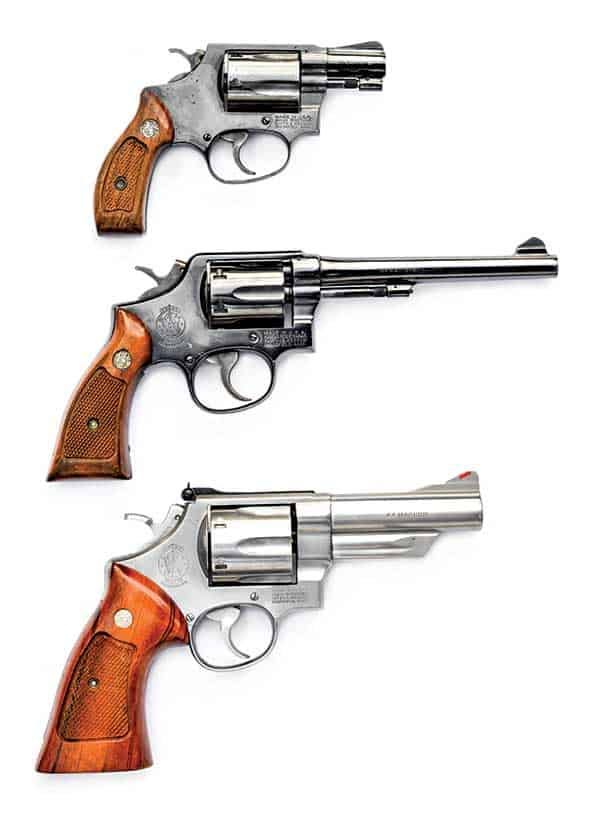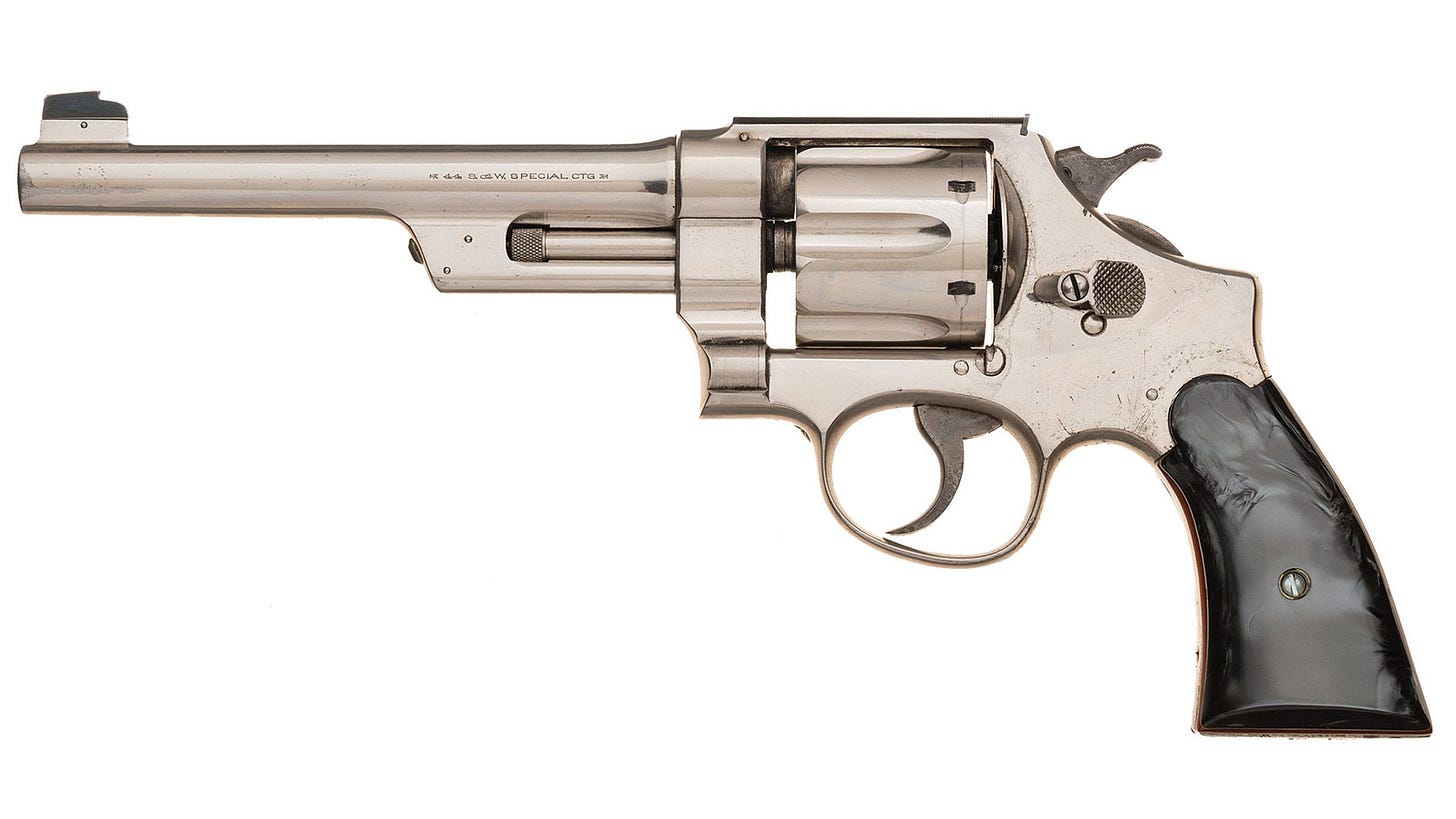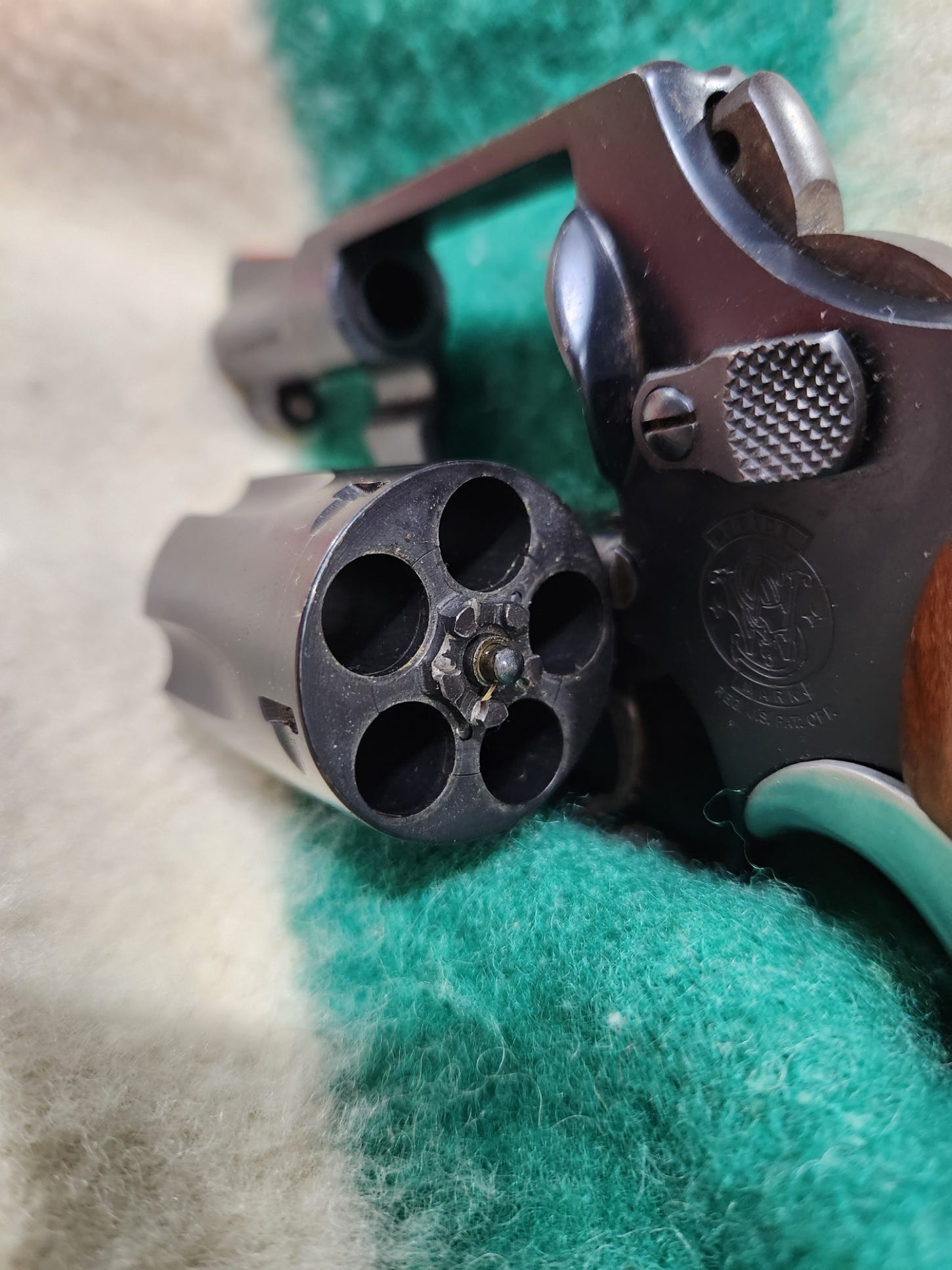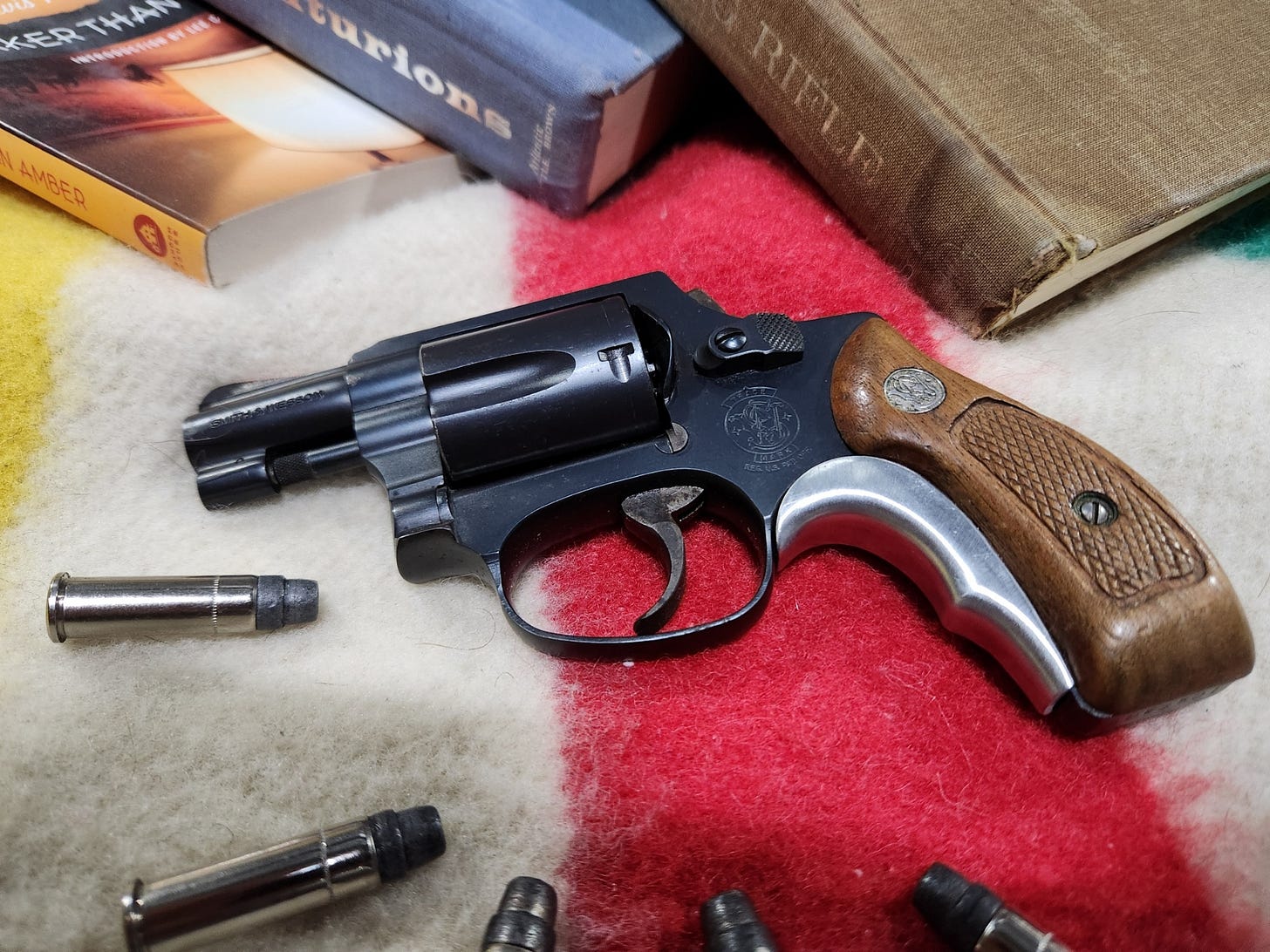Howdy, folks! Welcome back to Tales of a Gun. Still no shooting video of the Shockwave, I'm sorry to say.
In lieu thereof, this week we'll take a look at a very unusual Chief's Special.
But first, what is a Chief's Special? It's the first of S&W's J-frames, now known as the S&W Model 36. What is a J-frame? For that we go to the Dawn of Time, (with acknowledgements to the late, great Paul Harrell.)
For most of the 20th century, revolvers were available in three frame sizes small, medium and large, designed for a cylinder holding six rounds of .32, .38, or .44 (or .45) respectively. Revolvers are six-shooters after all, right?
For years, S&W's lineup had been the big N-frames at the top, such as the vaunted Triple Lock and the .44 Hand Ejector in .44 Special, and the 1917 in .45 ACP, that filled the Army's holsters when Colt couldn't build 1911s fast enough to supply the exponential military growth of the First World War.
In the middle was the beat cop’s friend, the ubiquitous K-frame Military & Police, almost always in .38 Special.
Their small frame gun was called the Terrier, a neat and trim little sixgun in .32 S&W Long, riding on the I-frame.
The only major break in that pattern came in the 1930s, with the advent of the .357 Magnum. Those were .38 caliber guns, built on the big N-frame. It's amazing to today's eyes, to see how much meat is left in the big cylinder, with little holes drilled in it.
Fast forward to 1950. Lots of savvy law enforcers knew that (especially in the days before speed loaders, the days of dump pouches and cartridge loops,) the best reload for a revolver was another revolver. Few were willing to pack two full size service guns, though, and probably even fewer departments wanted to hire a two-gun hotshot. Not a good look.
Enter the backup gun, stage right. They wanted something small and discreet. The K-frame was available with a 2” barrel, but even so it's a chunk of steel. Not really suitable for an ankle rig or slipping into a pocket.
Colt had been selling the Detective Special, a 6- shot .38, since the ‘20s, but though it made made a nice compact primary for a plain-clothes man, it wasn't much smaller than the K-frame.
Our hypothetical officer could, and many did, go the Terrier route. It was a fine little gun, but the perception was that .32 Long was underpowered. Also, it meant two calibers to buy, two calibers to carry, etc. There was a demand for something the size of the Terrier, but which could fire the standard .38 Special service ammunition.
Smith & Wesson decided to exploit that market. They took the existing Terrier, and stretched the cylinder enough to fit the longer .38 Special. They realized that by drilling fewer holes, they could fit larger ones.
Thus was the new gun born, a five-shot .38, only minimally bigger than the old .32. All they needed was a snappy name.
They debuted the new model at the 1950 meeting of the National Association of Chiefs of Police, and as a marketing ploy, decided to let the Chiefs name it. In an outpouring of creativity unmatched since the naming of the Rocky Mountains, the Chiefs voted to name it the Chief's Special.
That initial all steel, exposed hammer configuration was a runaway hit, and gave rise to a whole family of related guns, all built on the new J-frame. The “Airweight” guns with frames of aluminum alloy were much lighter. The “Bodyguard,” with its shrouded hammer was snag free, yet still retained the DA/SA functionality, allowing the hammer to be cocked for a precise shot, or even fired within a pocket, without fouling on the fabric.
Then the “Centennial,” took things a step further, doing away with the single action altogether in favor of a completely concealed hammer.
The parent of them all was the Chief's Special, a few years later renamed the Model 36, when Smith decided to shift to an all number system.
So much for the Model 36 in general.
Mine, however, is an oddity. So much so that a fair number of collectors will assert that it doesn't exist. That it’s obviously a refinish job, that Smith never made anything like that.
It’s a Model 36-2, made in the summer of 1989. It’s the standard .38 Special 5-shot, but instead of the usual highly polished blueing, this one is “glass beaded satin blue.” It’s not rough like some matte finishes, but definitely not a high polish job, either. Instead of the usual exposed spur hammer to facilitate DA or SA operation, this one has a factory bobbed hammer, (technically spurless, since it never had the spur to begin with. The case colors extend all around, where they’d be missing, if the spur had been ground off.)
It’s a true DAO, there’s no single action sear at all. But that double action trigger is probably the smoothest I’ve ever felt on a J-frame, owing to a unique design for the rebound slide and springs.
Smith had an order for this exact setup from the NYPD, to supply their detectives and undercover officers. When they’d finished the run, they made an additional 2,000 to the same spec for the civilian market. I don’t actually know which this is, contract gun or overrun. I’m very nearly curious enough to spring for the factory letter, though.
I haven’t had it long, and haven’t done more than test to see if it goes bang. It did that well enough. Hopefully more range time will be forthcoming.
In dry handling, though, as neat as the NYPD special version is, I can’t say I understand why NYPD would go to the trouble of ordering a special DAO version of a DA/SA gun, instead of just buying off-the-shelf Bodyguards or Centennials.
To me, a steel J-frame is in an odd niche. It’s just a bit too small to be ideal as a primary belt gun, (although plenty of people do carry them that way. Lennie Briscoe, for example, over many years of Law & Order.) But it’s also a bit heavy to be ideal as a pocket gun, a role the Airweights (especially the hidden hammer flavors) fill admirably. It does well in a coat pocket, but a bit much to trouser.
But, that’s a Tale of another Gun. Tune in next week for a look at the other half of my “too good to miss” deal, a Model 38, the Airweight Bodyguard.













My EDC is a +P .38 Bodyguard in the woods I add my 1911.
I dont know why DAO, but I can explain why not an Airweight. Frankly the shooting experience on it is terrible. My father carried one most of his life, got him and me out of a bad situation a few times, bit shooting it was miserable. Id rather shoot a full sized .357 over an airweight .38 any day, even the magnum loaded "Uncle Bubba's Pissing Hot Handloads" powerful.